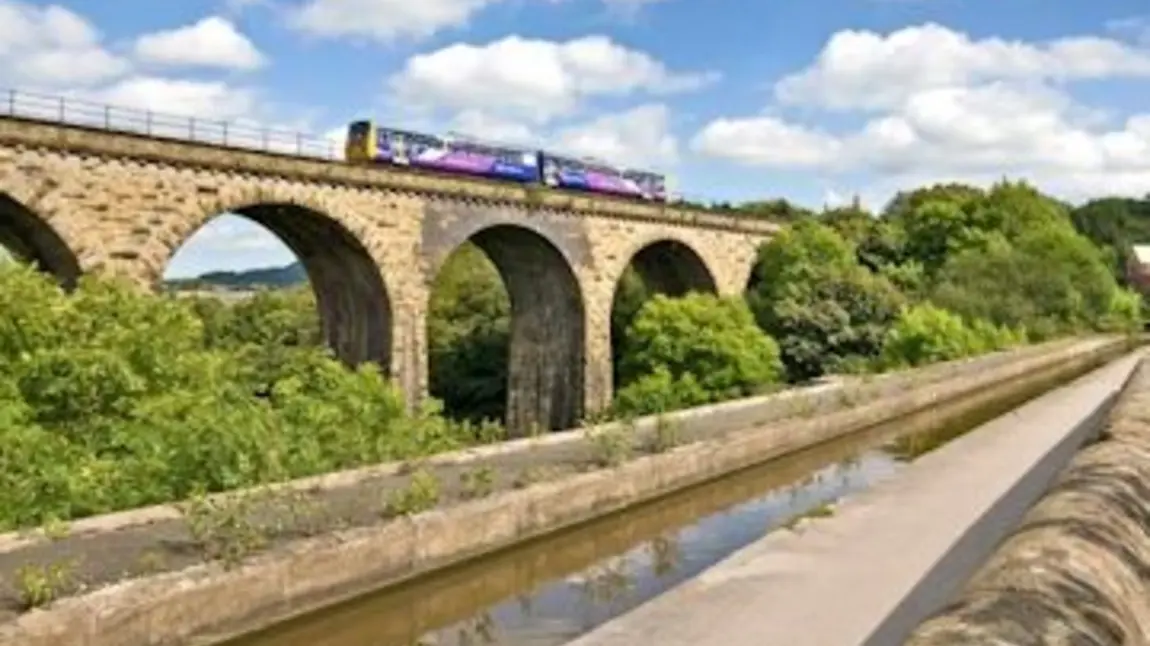Revealing the history of Marple and Mellor

The bid, led by the Canal and River Trust in partnership with Mellor Archaeological Trust and Stockport Council, will help to protect and celebrate three important heritage sites and attract more visitors to Marple and Mellor.
The three year project centres around the legacy of Samuel Oldknow (1756-1828), one of the most important figures of the early cotton industry and a man who left a lasting mark on Marple. The Lottery funding will help to protect and improve access to three of Oldknow’s most important legacies: Marple Aqueduct, which carries the Peak Forest Canal 100 feet over the River Goyt, a series of elaborate canal side Lime Kilns and the impressive water powered Mellor Mill and complex that sits within the valley.
The project will include a series of environmental improvements to the sites as well as heritage training skills, development of walking routes and interpretation to help visitors understand how the sites would have looked at the height of the Industrial Revolution.
Walter Menzies, Chairman of the Canal and River Trust’s Manchester and Pennines Partnership, said: “This is fantastic news. The Peak Forest Canal is one of the most scenic waterways in Britain and boasts some fascinating and important historic sites. We are delighted that this grant from the Heritage Lottery Fund will help to improve access to the magnificent Marple Aqueduct, preserving it for future generations and ensuring that local people can explore the wonderful heritage and wildlife that the Peak Forest Canal has to offer.”
John Hearle, Chairman of Mellor Archaeological Trust (MAT), comments: “When it was built in Palladian style in 1790-92, Mellor Mill was the largest and most impressive cotton mill in the world. It was burnt out in 1892 and the land reverted to woodland. A grant from the Association for Industrial Archaeology enabled MAT to open up the wheelpit under the mill. This has attracted many visitors. The HLF grant will enable MAT to uncover remains of the whole complex, the mill itself, industrial buildings nearer the river and Oldknow’s mansion, and open them to public view in a small country park.”
Sara Hilton, Head of Heritage Lottery Fund North West, said: “The Peak Forest Canal played a central role in the industrial history of the region. The Heritage Lottery Fund is delighted to support this project as it will make even more people aware of this wonderful landmark and its historic significance. Our investment in Marple and Mellor is bringing real cohesion to the natural and built heritage of the area while reconnecting people with what often lies overlooked on their doorstep.”
Thanks to the funding the partners will employ a temporary project manager and an education and interpretation officer to manage a range of volunteering and educational opportunities.
Notes to editors
The Peak Forest Canal boasts two Scheduled Ancient Monuments in its 15-mile length – the grand, three-arch Marple Aqueduct and the historic Bugsworth Basin. Bugsworth Basin lies at the end of the canal, where it once connected with a horse-drawn tramway that carried gritstone, limestone and burnt lime to be loaded at Bugsworth for onward carriage to Manchester, the North West and Midlands. Marple Lime Kilns, which lies adjacent to the junction of the Peak Forest Canal and the Macclesfield Canal and is also a Scheduled Ancient Monument.
Canal and River Trust is the guardian of 2,000 miles of historic waterways across England and Wales. We are among the largest charities in the UK, maintaining the nation’s third largest collection of listed structures, as well as museums, archives, navigations and hundreds of important wildlife sites. We believe that our canals and rivers are a national treasure and a local haven for people and wildlife. It is our job to care for this wonderful legacy – holding it in trust for the nation in perpetuity and giving people a greater role in the running of their local waterways.
Mellor Archaeological Trust was formed in 2000 following the discovery of an Iron Age ditch in the garden of the Old Vicarage next to Mellor Church on the edge of Stockport. Excavation was completed in 2009, but a section of the ditch is open to public view. The trust’s aims are to promote the investigation, interpretation, and preservation of the archaeology of the area and to bring this heritage to the public. Excavations continue at Shaw Cairn on Mellor Moor, but the main activity is now at the Mellor Mill complex.
Further information
Helen Hall, 07717 760 284, email: helen.hall@canalrivertrust.org.uk.